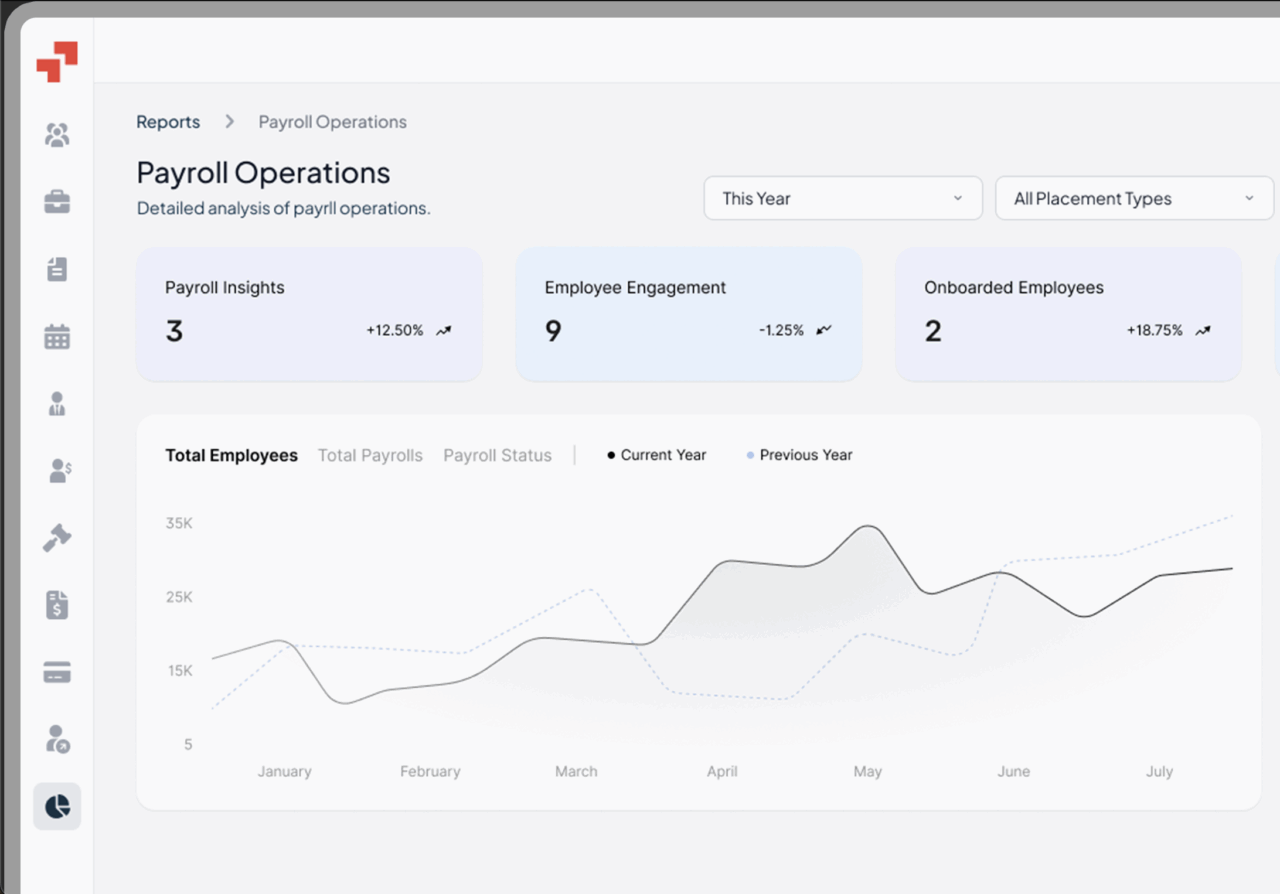Global Workforce GlossaryPre-tax income
Pretax income (also called “earnings before tax” or EBT) is a company’s profit after subtracting all operating and non-operating expenses (including interest) but before deducting income taxes.
Calculating pretax income involves subtracting all operating and non-operating expenses, including interest, from a company’s revenues, excluding taxes.
Pretax income is also referred to as pretax earnings and pre tax earnings. The process to calculate pre tax income is standardized and reported on a company’s financial statements according to generally accepted accounting principles (GAAP).
While gross margin only considers direct costs of goods sold, pretax income accounts for all expenses except taxes.
Table of Contents
- Pre tax income?
- What is taxable income?
- Why is pretax income important for businesses?
- How is pretax income calculated?
- Pretax income vs. other financial metrics
- What pretax metrics are used to analyze business performance?
- Difference between pretax income and taxable income
- What is the difference between operating income and pretax income?
- What is pretax profit margin?
- Pros and cons of using pretax income as a financial metric
- Example Scenario
- FAQs
What is taxable income?
Taxable income is the base amount of profit subject to taxation, computed under jurisdictional tax codes. To determine the actual amount of taxable income reported to the Internal Revenue Service, businesses subtract tax deductions and tax credits from pretax income. This actual amount may differ from pretax income due to these adjustments.
Why is pretax income important for businesses?
Pretax income is a key indicator of a company’s profitability and financial performance. It isolates business performance from tax regimes, making cross-jurisdiction comparisons simpler, supporting investor valuation, and enabling tax planning and debt servicing decisions.
Pretax income is used to assess a company’s financial health and fiscal health, as it removes volatile differences caused by different tax rates and corporate taxes across different jurisdictions. Comparing pretax income helps investors and analysts evaluate companies regardless of varying tax rates.
How is pretax income calculated?
The formula for calculating pretax income (also known as Earnings Before Taxes, or EBT) starts with total revenue or the company’s revenue.
To calculate pre-tax income, you subtract the cost of goods sold, operating expenses (such as maintenance costs, legal fees, and marketing fees), and interest expenses from revenue operating, then add interest income and other non-operating items.
Calculating pretax income involves ensuring that all relevant incomes and expenses are properly accounted for. Common examples of items that are accounted for in this calculation include interest income, interest expenses, maintenance costs, legal fees, and marketing fees.
In summary, the formula for calculating pretax income is:
Pretax Income = Total Revenue – Cost of Goods Sold – Operating Expenses (including maintenance costs, legal fees, marketing fees) – Interest Expenses + Interest Income + Other Non-operating Items.
Pretax income vs. other financial metrics
Unlike EBITDA or EBIT, pretax income includes interest and non-operating gains/losses. Unlike net income, it excludes tax effects. EBIT excludes interest; EBITDA also excludes depreciation and amortisation.
Gross margin, EBT margin, and pretax earnings margin are related but distinct metrics. Gross margin focuses on gross profit as a percentage of total sales, while EBT margin and pretax earnings margin show pretax income as a percentage of total sales.
These margins are commonly used to compare the profitability of companies across industries and regions, as they provide a standard basis for evaluation regardless of tax rates or structural differences.
What pretax metrics are used to analyze business performance?
Common metrics include pretax profit margin (pretax income ÷ revenue), pretax earnings margin (pretax earnings ÷ revenue), EBT margin, EBT growth rate, and pretax return on invested capital (ROIC pretax), to benchmark operating leverage independent of tax effects.
Metrics like EBT margin and pretax earnings margin are widely used to evaluate a company’s profitability and to benchmark performance across companies, as they allow for meaningful comparisons regardless of differences in tax rates or structures.
Difference between pretax income and taxable income
Pretax income is an accounting measure from the income statement, while taxable income is adjusted under tax law through tax deductions, tax credits, and carryforwards.
Tax deductions and tax credits are applied to pretax income to determine the actual amount of taxable income, which is then used to calculate tax expenses and for paying taxes.
Tax considerations, such as changes in tax regulations or available credits and deductions, can cause the divergence between pretax income and taxable income.
What is the difference between operating income and pretax income?
Operating income (also called EBIT) reflects profit from core operations before interest and taxes. Pretax income goes further by adding non-operating items such as interest income and subtracting interest expenses. All relevant incomes and expenses must be properly accounted for to arrive at pretax income.
What is pretax profit margin?
Pretax profit margin = (Pretax Income ÷ Revenue) × 100%.
This metric is also known as EBT margin or pretax earnings margin, and is calculated as pretax income divided by total sales, excluding taxes. It expresses how much profit (pre-tax) is earned per dollar of sales, facilitating comparisons across firms.
Pros and cons of using pretax income as a financial metric
Pros: Enables apples-to-apples comparisons across tax regimes and tax rates; informs capital structure and debt decisions.
Cons: Still influenced by interest (capital structure bias); ignores actual tax burden, different tax rates, and deferred tax volatility, which can lead to volatile differences in post tax results. Tax considerations are important when interpreting pretax income, as they can significantly impact a company’s financial performance and comparability.
Example Scenario
A US-founded SaaS company, referred to here as Company ABC, expands into Germany and the UK.
For the fiscal year, its US entity reports total revenue of $50M and pretax income of $10M. The UK subsidiary reports total revenue of £8M and pretax income of £2M, while the German unit has total revenue of €6M and pretax income of €1.5M.
To compare performance across different jurisdictions with varying corporate taxes and tax rates, the CFO converts local figures to USD, then computes pretax margins and growth rates, using total revenue as the starting point and stripping out tax differences. She then runs debt stress tests, how much additional interest the group could absorb before pretax income turns negative.
Separately, she forecasts taxable income in each jurisdiction (applying local deductions and credits) to estimate absolute tax liability, taking into account the specific corporate taxes and tax rates in each region.
This dual use of pretax and taxable income informs both capital allocation (which markets to double down on) and tax structuring (e.g. intercompany royalties, offsets). Financial modelling is used to project future pretax income and compare scenarios across these different jurisdictions.
FAQs
Is pretax income gross or net?
Pretax income is a “net” figure after expenses (COGS, operating costs, interest) but before taxes, so not “gross” (top line).
Is pretax better or after tax?
Neither is universally better; pretax is ideal for performance benchmarking and structural decisions, while after tax (net) reflects ultimate owner return.
How to find monthly pretax income?
Take the full-period (annual/quarterly) pretax income from your income statement typically calculated for a fiscal year and divide by the number of months. Adjust for seasonality if needed.
Does pretax mean tax-free?
No. Pretax income is a metric before tax calculation; actual taxes will still be computed and paid based on tax law.
Does insurance come under pretax?
Yes, insurance expenses (if deductible or operating costs) are included in operating or non-operating expenses, thus factored into pretax income. Various benefits such as retirement plans and social security contributions are also included in pretax calculations.
Do HR professionals and payroll teams need to stay compliant when calculating pretax income and benefits?
Yes, HR professionals and payroll teams must stay compliant with local tax laws and regulations when managing payroll, calculating pretax income, and administering various benefits like retirement plans and social security. This ensures accurate payroll processing and helps avoid legal or financial penalties.
Hire the Best Talent, Anywhere






